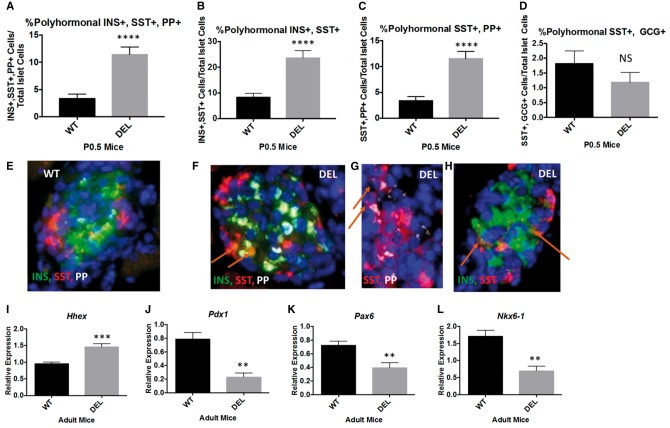Figure 4.
The increase in δ-cells in Snord116p−/m+ mice is associated with an increased percentage of polyhormonal endocrine cells in the neonatal pancreas and altered transcription factor expression levels. (A) There is a 3.4-fold increase in the percentage of polyhormonal cells positive for insulin, somatostatin, pancreatic polypeptide in P0.5 Snord116p−/m+ pancreata compared with WT littermates. (B) There is a 2.7-fold increase in polyhormonal cells co-staining for insulin and somatostatin in Snord116p−/m+ neonatal pancreata. (C) Similarly, there is a 3.4-fold increase in somatostatin and pancreatic polypeptide double positive cells in P0.5 Snord116p−/m+ pancreata. (D) There is no difference in the percentage of glucagon and somatostatin double-positive cells. E-H) Representative images of polyhormonal cells in WT (E) and Snord116p−/m+ pancreata (F–H). (I) Hhex expression is 1.5-fold higher in isolated islets from adult Snord116p−/m+ mice compared with WT littermates. (J) Pdx1 gene expression levels are 72% lower in Snord116p−/m+ isolated islets. (K) Pax6 is 46% lower in isolated islets from adult Snord116p−/m+ mice compared with WT littermates. (L) Nkx6-1 gene expression levels are 60% lower in Snord116p−/m+ isolated islets compared with WT.

